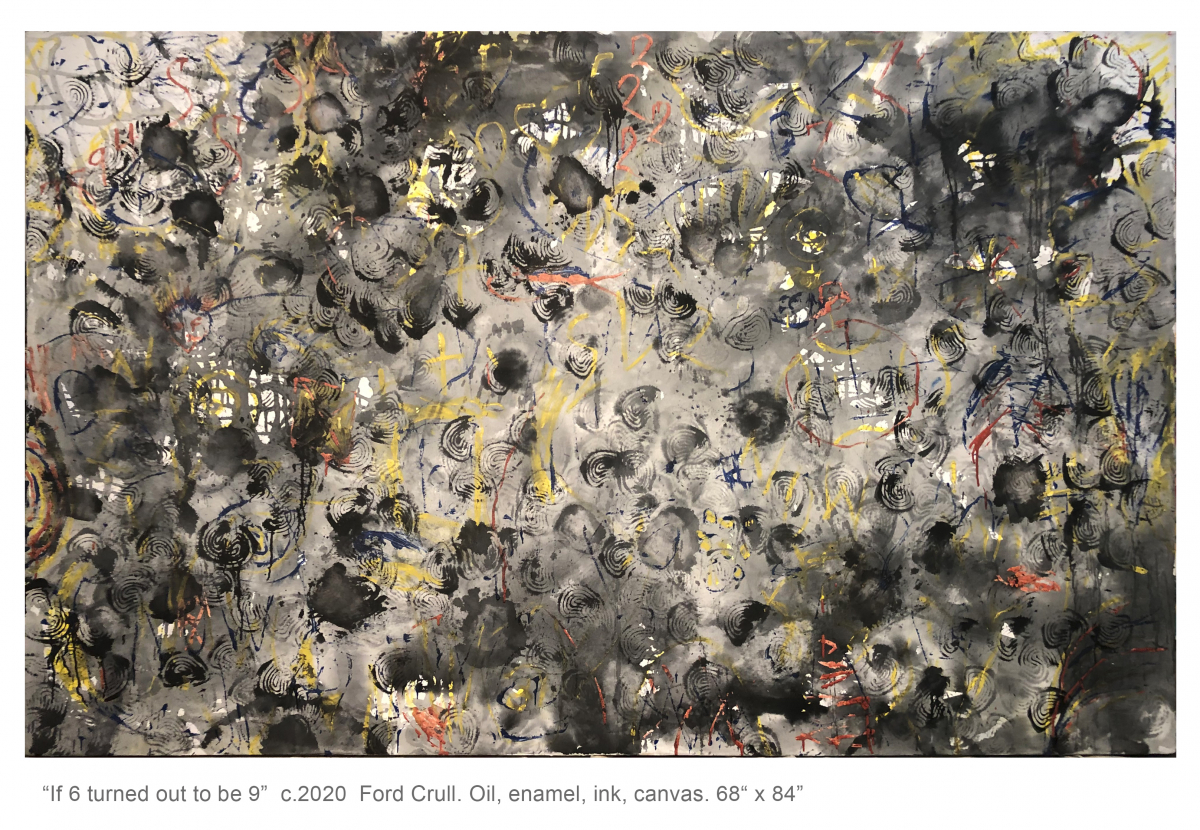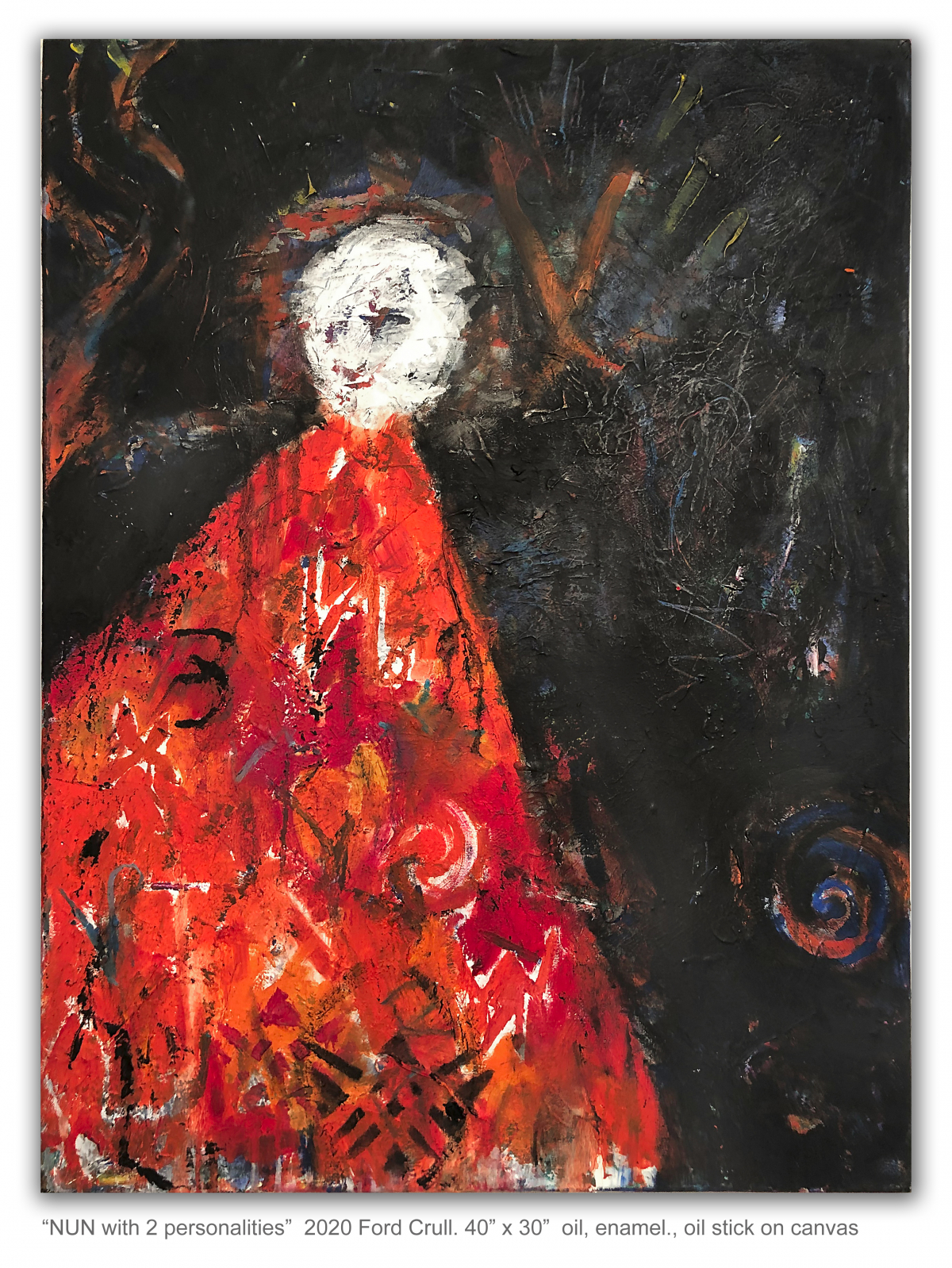
"Some art wishes merely to be stylish, to make a fashionable fit with the moment. Other art – as ambitious in its way as that of Ford Crull’s would like to help us transcend ourselves, to find a way to some realm of thought or feeling where individual differences are overcome."
- Carter Ratcliff
This quote about artist Ford Crull uses the word transcend, and certainly during my meeting with him and reviewing the work I got a strong sense of that…. and a great deal more.
Kathleen Cullen: At first glance some of the work appears almost minimal, but a closer look reveal a more complex representation. Can you describe what you are portraying?
Ford Crull: The symbols and pictograms reference the idea of the collective unconscious, a sublime human sensibility and while appearing subtle is actually much more complex. The subject matter becomes irrelevent to the underlying strategy of becoming one with the sublime, and out of the chaos communicating that which manifests the soul. The contemporary symbolist painter looks within for inspiration.

KC: We see numbers, shapes and images. Can you describe what these are and how they influence what you do?
FC: I use a myriad of symbols which variously imply a sexual unfolding, romantic suffering, occult wisdom, and transcendental release. These symbols coexist in a psychic atmosphere in which they overlap, dissolve, and reappear with a kind of furious insistence. The heart is among the most frequent of these symbols, combining love on both physical and spiritual levels. It also represents the Templar idea of a Oneness with God. The images act as a kind of voice that emerges from and disappears back into the highly worked surface. The scrawled, fragmentary phrases serve as kind of counterpoint to the free flowing of gestural abstraction and symbolic forms.

KC: The painting titled the "Nun with Two Personalities" has a person that when closely examined reveals two faces. Can you describe the meaning and if it is a recurring theme?
FC: It is again purely referential yet symbolic. The religions of the time espoused a notion of connection with God as an either good vs. evil, which one either embraced or while annihilating the local indigenous cultures they sought to collect.
KC: Your website opens to the quote from Carter Ratcliff about transcendence. You obviously agree-can you describe this?
FC: One finds, then, a conception of passion that transcends material objects, that moves through the sensible universe in search of its grandest forms and yet can never find outward grandeur adequate to its inherent vision and its capacities of devotion. The intensity of the soul’s passion is measured by the immensity of its objects. The immensity is, at its extreme, quite literally boundlessness, a surpassing of measurable extension.
KC: Looking at your work over your career, some elements have remained while new ones start to develop. What are your influences?
FC: My work is very much based on the Symbolist sensibility of the 19th century. There is a strong element of the diaristic in my work, with each painting serving as a kind of painterly journal of reflections and reveries, set loose from their origins in specific events. In a wider sense, these paintings constitute a kind of intensive search to wrest meaning from the anarchy of feeling. As meditations on emotional chaos, they enter into a world of competing impulses and simultaneous transmissions, seeking a resolution that is both cathartic and mysterious.

KC: You have several shows in process. What should we be looking for in your upcoming work and will you continue to show it with older pieces?
FC: Lately, I have been interested in how the evolution of my work has explored similar ideas while at the same time finding different visual interpretations of how to explore these ideas. My images are involved in a perpetual dance, a narrative flow that destroys any preconceived notions or verbal meanings. The viewer is free to associate around the visual text which I present, supplying his own interpretations from his own experiences. So to exhibit works from different times gives the viewer a continuity of expression and which has an underlying truth to all the work.
This interview is written on the occasion of Ford Crull's exhibition at the George Berges Gallery located at 462 West Broadway, New York (212) 475-4524. The exhibition focuses on Crull’s work spanning almost two decades and will run through Saturday, November 20, 2020.
